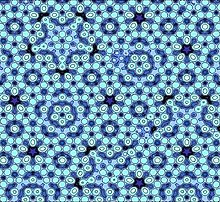Dan Shechtman
On April 8, 1982, while on sabbatical at the U.S. National Bureau of Standards in Washington, D.C., Shechtman discovered the icosahedral phase, which opened the new field of quasiperiodic crystals.
I wanted to be like that.Shechtman is married to Prof. Tzipora Shechtman, Head of the Department of Counseling and Human Development at Haifa University, and author of two books on psychotherapy.
in Materials Engineering in 1968,[1] Shechtman was an NRC fellow at the Aerospace Research Laboratories at Wright Patterson AFB, Ohio, where he studied for three years the microstructure and physical metallurgy of titanium aluminides.
In 1981–1983 he was on sabbatical at Johns Hopkins University, where he studied rapidly solidified aluminum transition metal alloys, in a joint program with NBS.
In 1992–1994 he was on sabbatical at National Institute of Standards and Technology (NIST), where he studied the effect of the defect structure of CVD diamond on its growth and properties.
The leader of the opposition to my findings was the two-time Nobel Laureate Linus Pauling, the idol of the American Chemical Society and one of the most famous scientists in the world.
The head of Shechtman's research group told him to "go back and read the textbook" and a couple of days later "asked him to leave for 'bringing disgrace' on the team.
[18][19] The Nobel Committee at the Royal Swedish Academy of Sciences said that "his discovery was extremely controversial," but that his work "eventually forced scientists to reconsider their conception of the very nature of matter.
"[15] Through Shechtman's discovery, several other groups were able to form similar quasicrystals by 1987, finding these materials to have low thermal and electrical conductivity, while possessing high structural stability.
"[15]"An intriguing feature of such patterns, [which are] also found in Arab mosaics, is that the mathematical constant known as the Greek letters phi or tau, or the "golden ratio", occurs over and over again.


